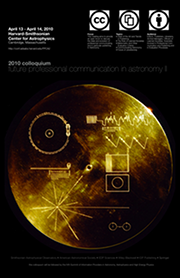Fully Digital: Policy and Process Implications for the AAS
Chris Biemesderfer
AAS
Over the past two decades, every scholarly publisher (including the AAS) has migrated at least the mechanical aspects of their journal publishing so that they utilize digital means. The academy was comfortable with that for a while, but publishers are under increasing pressure to adapt further. At the AAS, we think that means bringing our publishing program to the point of being fully digital, by establishing procedures and policies that consider the digital objects of publication primarily. We have always thought about our electronic journals as databases of digital articles, from which we can publish and syndicate articles one at a time, and we must now put flesh on those bones by developing practices that are consistent with the realities of article at a time publication online (including the ramifications of other article databases such as arXiv). For example, starting in 2011 the AAS will use article numbering to distinguish articles in a volume (and do away w!
ith continuous pagination), and we will introduce author fees based on digital metrics. As a learned society that holds the long-term rights to the literature, we have actively taken responsibility for the preservation of the digital assets that constitute our journals, and in so doing we have not forsaken the legacy pre-digital assets. All of us who serve as the long-term stewards of scholarship must begin to evolve into fully digital publishers.







